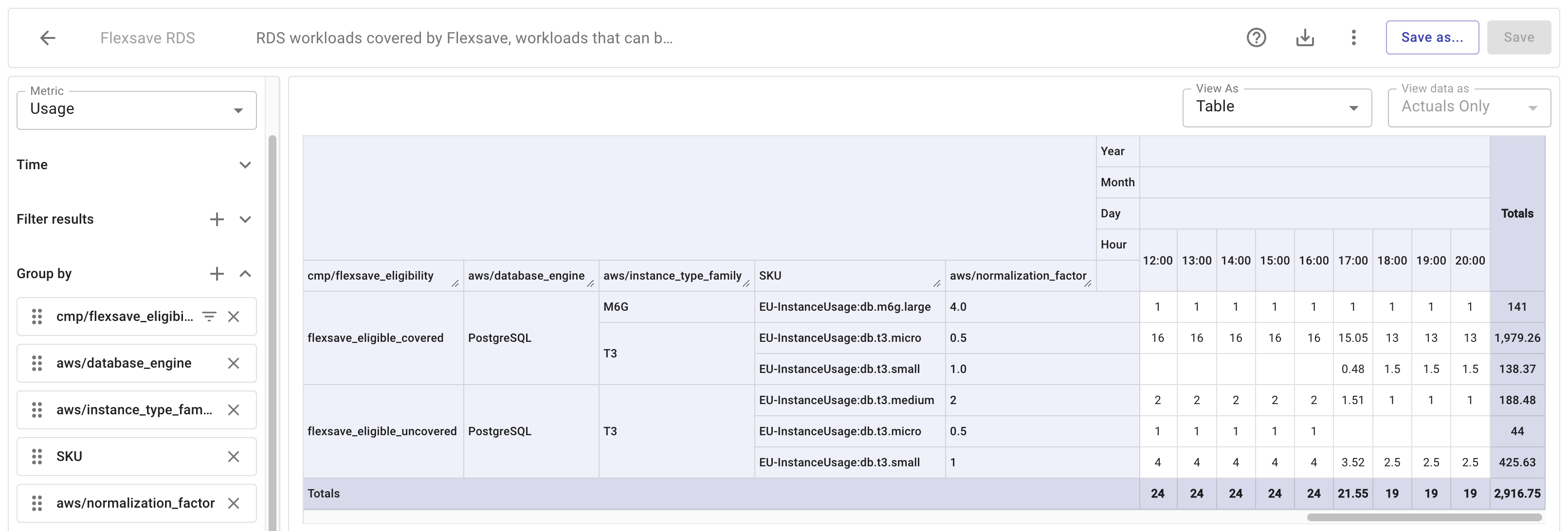Flexsave for RDS
It's no longer possible to enable Flexsave for Amazon RDS. If you've already enabled the feature, your access remains unaffected and you can continue to benefit from it.
Capabilities and eligibility
Flexsave for Amazon RDS supports:
-
DB instances for single and multiple Availability Zones, as well as clusters.
-
DB Instances for the MySQL and PostgreSQL database engines, but not the Amazon Aurora database engine.
-
DB Instances of any size in the instance families
db.t3,db.m6ganddb.r6g. -
The North Virginia (
us-east-1) and Ireland (eu-west-1) regions.
For a combination of Database Engine/Instance Family/Region to be eligible for Flexsave, it needs to maintain stable usage of at least 6 normalized units across all DB instances over the last 30 days; the instances can be of different sizes.
Flexsave doesn't support DB Instances for the Amazon Aurora database engine.
RDS coverage
If you've enabled Flexsave for RDS, you can run the Flexsave RDS preset report to better understand how Flexsave covers your usage of on-demand DB instances. If the feature is not yet enabled, you can run the report to assess how Flexsave could cover your usage.
-
Sign in to the DoiT console, select Analyze from the top navigation bar, and then select Reports.
-
Find and run the preset report named Flexsave RDS.

The workloads are first grouped by the label cmp/flexsave_eligibility and filtered by the following values:
-
flexsave_eligible_covered: Workloads covered by Flexsave. -
flexsave_eligible_customer_covered: Workloads that are eligible for Flexsave while currently covered by your own Reserved DB Instances. -
flexsave_eligible_uncovered: Workloads that are eligible for Flexsave but not covered yet. This could happen for various reasons, for example, you haven't enabled Flexsave yet or the usage fluctuates a lot.
The usage is further broken down by SKU and the following system labels:
-
aws/database_engine: The database engine of your DB instance. Examples: PostgreSQL, MySQL.
-
aws/instance_type_family: The instance family associated with the given usage. Examples: T3, M6G, R6G.
-
aws/normalization_factor: The associated normalization factor of the reserved DB instance. For more information on the normalization factor, see Size-flexible reserved DB instances.
-
If you choose to build your own report based on the preset, you can include flexsave_ineligible, which applies to usage that does't qualify for Flexsave.
RDS savings
To view RDS savings in reports, see Flexsave RDS Savings.